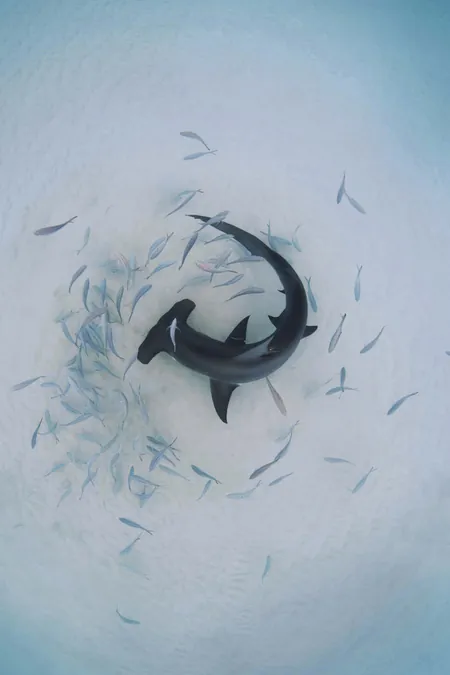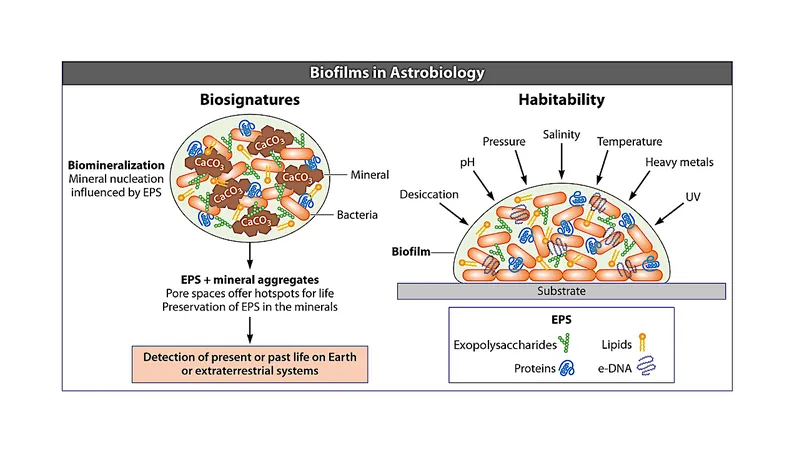
Home Sweet Home: Some Great Hammerhead Sharks Prefer the Bahamas Over Migration
2025-03-21
Author: Jia
Introduction
Recent research has revealed intriguing insights into the behavior of great hammerhead sharks, highlighting that some of these extraordinary creatures prefer to establish their roots instead of migrating. A study conducted in the Bahamas' shark sanctuary around Andros Island indicates that while certain individuals undertake long migrations, others choose to remain in familiar waters that provide all their needs for survival. This finding could play a crucial role in safeguarding this critically endangered species.
Declining Population
According to Dr. Tristan Guttridge of Saving the Blue, lead author of the study published in Frontiers in Marine Science, the great hammerhead population has significantly declined, with estimates suggesting a reduction of over 80% in the last three generations. Genetic analysis indicates low genetic diversity and inbreeding, underscoring the dire need for improved conservation strategies.
Significance of Movement Patterns
"Understanding the movement patterns of great hammerheads is critical for enhancing conservation efforts," Dr. Guttridge explained. "Our research shows that some great hammerheads demonstrate residency in the Bahamas, keeping them safe from fishing pressures throughout the year."
Migration and Winter Sanctuaries
Great hammerhead sharks are known to embark on extensive journeys of up to 3,000 kilometers. However, certain areas, like Bimini in the Bahamas, serve as winter sanctuaries, where these sharks congregate before dispersing in the summer months. The researchers sought to explore the significance of other Bahamian islands for these sharks, examining their ecological role and long-term habitat use.
Focus of the Study
The study primarily focused on Andros Island, the largest in the Bahamas, which is home to one of the planet's largest fringing reefs. "When we began this research, knowledge regarding great hammerheads in the central Bahamas was virtually nonexistent, especially concerning their habitat utilization at Andros," Dr. Guttridge noted. "We were lacking even basic information about their diets."
Research Methodology
Between March 2020 and June 2024, the research team, funded in part by Discovery's Shark Week, managed to capture 22 sharks. They selected habitats preferred by great hammerheads and employed baited rigs to lure them. Each shark was carefully assessed for health before tagging, and satellite trackers were affixed to seven individuals for detailed tracking.
Data Collection and Analysis
The data collected led to a total of 78 encounters recorded between 2018 and 2024, primarily involving large juveniles and adults. Notably, seasonal sightings peaked between January and March, with additional occurrences noted in June and July. The study even observed evidence of recent mating, suggesting that the area might be vital for reproduction.
Habitat Preferences
This research uncovered that the sharks predominantly favored specific eastern waters near north and central Andros, exhibiting a preference for a relatively small 400 km² area. However, there were also high-traffic zones near reef drop-offs rich in prey species. Sharks that ventured south or beyond the northern tips of the island were likely to continue migrating, with some tracked to the U.S. East Coast, indicating a connection to the West Atlantic hammerhead population.
Dietary Analysis
Diet analysis through biopsies revealed that barracuda and stingrays constituted approximately two-thirds of the sharks' meals, with the rest including smaller shark species. Interestingly, dietary preferences varied significantly among individuals; one shark's diet was predominantly made up of silky sharks.
Year-Round Residency
With abundant food resources and cooler depths accessible even during the summer months, some great hammerheads may opt to remain in the Bahamas year-round, distinguishing them from their counterparts near Bimini.
Individual Preferences
"While resource availability drives space use, not all sharks stay despite the food abundance," Dr. Guttridge commented. "Individual diet preferences may dictate their choice to migrate or remain."
Future Research Directions
The dynamics of migration in other species have often been linked to environmental factors, body size, food access, and predation. Dr. Guttridge hinted at a potential genetic component influencing this behavior, suggesting that more research is needed to fully understand it.
Conservation Needs
"This research underscores the value of Bahamian waters and the importance of protective measures," Dr. Guttridge concluded. "It also emphasizes that while some sharks inhabit year-round protected zones, others do not, highlighting the critical need for international collaboration in conservation efforts for these highly mobile species. A crucial next step involves determining how these great hammerheads integrate with the broader Northwest Atlantic population."
Conclusion
The fate of the great hammerhead sharks hangs in the balance, and understanding their behaviors and conservation needs is vital in ensuring the survival of this majestic species for generations to come.



 Brasil (PT)
Brasil (PT)
 Canada (EN)
Canada (EN)
 Chile (ES)
Chile (ES)
 Česko (CS)
Česko (CS)
 대한민국 (KO)
대한민국 (KO)
 España (ES)
España (ES)
 France (FR)
France (FR)
 Hong Kong (EN)
Hong Kong (EN)
 Italia (IT)
Italia (IT)
 日本 (JA)
日本 (JA)
 Magyarország (HU)
Magyarország (HU)
 Norge (NO)
Norge (NO)
 Polska (PL)
Polska (PL)
 Schweiz (DE)
Schweiz (DE)
 Singapore (EN)
Singapore (EN)
 Sverige (SV)
Sverige (SV)
 Suomi (FI)
Suomi (FI)
 Türkiye (TR)
Türkiye (TR)
 الإمارات العربية المتحدة (AR)
الإمارات العربية المتحدة (AR)